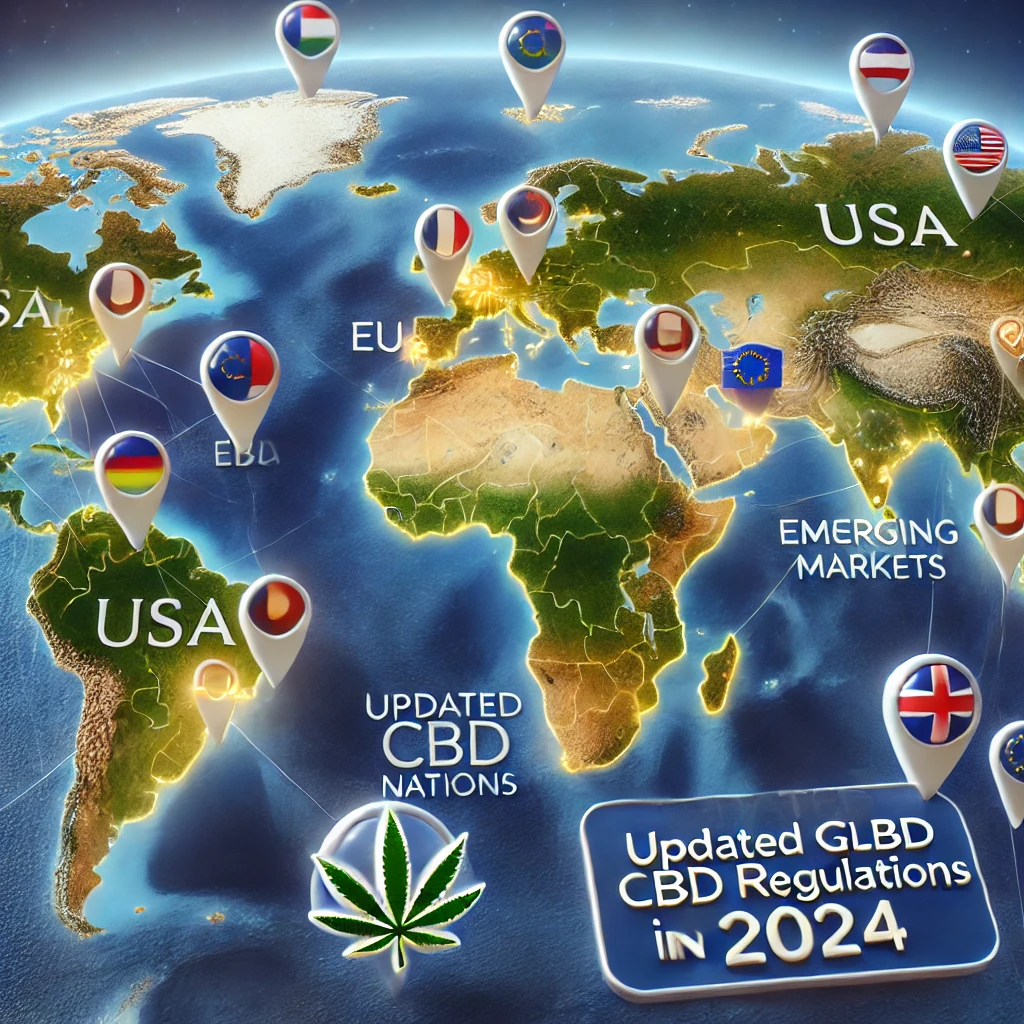The CBD Legal Landscape 2025: Navigating Changes and Opportunities

1. Introduction to the Evolving CBD Industry
In recent years, CBD has emerged as a major player in the wellness and health industries. Its rapid rise in popularity, backed by growing consumer interest, has transformed the market. Predictions for the CBD market in 2025 indicate continued expansion as more people turn to CBD for its potential benefits. However, this growth also highlights the critical need to stay informed about evolving legal frameworks. For both businesses and consumers, understanding the changing legal status of CBD is essential, as it directly affects market dynamics, consumer trust, and operational strategies.
2. Recent CBD Legal Landscape 2025 – Updates and Legislative Changes
The legal landscape for CBD has undergone significant shifts in 2025. Around the globe, governments are reevaluating their policies, leading to notable changes in legislation. These updates present opportunities for growth but also impose challenges that require careful navigation.
Adaptation to New Laws: Businesses must align with updated legal requirements to avoid penalties or operational disruptions. Non-compliance with new CBD regulations can result in fines, legal actions, or even business closures.
Hemp Industry Regulations: Differentiating between hemp and marijuana laws is crucial. Hemp-specific regulations, particularly those setting permissible THC levels in CBD products, directly impact product development and marketing strategies.
For businesses, staying proactive in understanding compliance requirements ensures continued success in an increasingly regulated environment.
3. Global CBD Regulations: A Country-by-Country Perspective

The global legal status of CBD varies widely, creating a complex regulatory environment.
United States: While federal regulations remain strict, individual states have developed more flexible policies. Understanding both state and federal requirements is essential for U.S.-based businesses.
Europe: The European Union sets overarching guidelines, but regulations differ by country. This variation creates both challenges and opportunities for CBD businesses operating in the region.
Asia: In Asia, the legal framework ranges from countries like Japan, which permit CBD, to those maintaining strict bans.
Navigating these differences is key for international businesses. While cross-border legal complexities can hinder operations, case studies highlight how companies successfully adapt to these challenges. Emerging markets, where CBD legalization is on the rise, also present significant growth opportunities. Identifying these regions and crafting tailored entry strategies is critical for long-term success.
4. CBD Market Predictions for 2025 and Beyond
Several factors are shaping the future of the CBD industry:
Consumer Preferences: A growing emphasis on natural, health-focused products is driving demand for innovative CBD solutions. Consumers are increasingly prioritizing quality and transparency.
Economic Impact of Legislation: Legal changes have a direct effect on market growth, investment trends, and business strategies. Predictions suggest that the global CBD market valuation will continue to rise as the industry matures.
Technological Advancements: Innovations in CBD cultivation, extraction, and product development are enhancing efficiency and quality. These advancements are expected to play a pivotal role in meeting consumer demand and driving industry growth.
Staying ahead of these trends will be crucial for businesses aiming to secure their position in the expanding market.
5. Navigating CBD Compliance and Regulatory Challenges
To succeed in a heavily regulated industry, businesses must develop strong compliance strategies:
Regulatory Updates: Keeping up with changes in local, national, and international laws ensures businesses remain compliant and avoid costly penalties.
Accurate Labeling: Understanding and adhering to CBD labeling and advertising requirements is essential. Misleading claims or inaccurate labels can result in severe legal repercussions.
Advocacy and Industry Involvement: Engaging with industry organizations can help businesses influence policy decisions while providing access to resources for navigating compliance challenges.
Investing in tools and systems to monitor regulatory updates and streamline compliance processes can provide businesses with a competitive edge.
6. Conclusion: Preparing for the Future of CBD
As the CBD industry continues to evolve, staying informed about legal updates and market trends is imperative. Businesses that embrace these changes and proactively adapt will be well-positioned for success. Strategic actions to consider include:
Embracing Technological Advancements: Investing in new methods of production and product development to stay ahead of the competition.
Understanding Global Regulations: Navigating international markets with a clear understanding of regional legal requirements.
Engaging in Advocacy: Collaborating with industry groups to shape policies and stay informed about upcoming changes.
The dynamic nature of the CBD industry presents both challenges and opportunities. By leveraging innovation and aligning with evolving regulations, stakeholders can unlock the full potential of CBD in 2025 and beyond, setting the stage for sustainable growth and success
Stay ahead in the CBD industry! Check out our latest insights and tools for navigating the 2025 legal landscape.








